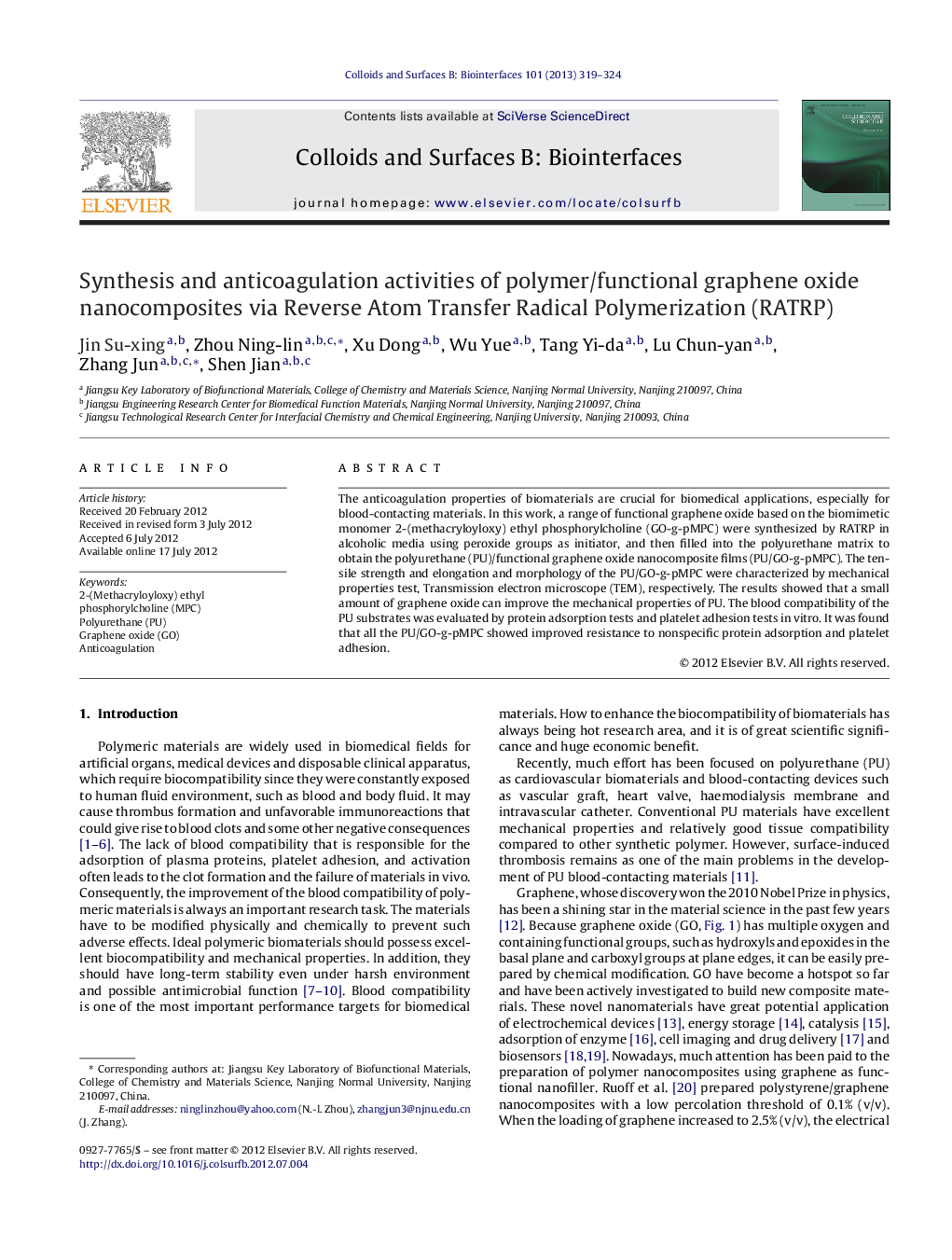| Article ID | Journal | Published Year | Pages | File Type |
|---|---|---|---|---|
| 600463 | Colloids and Surfaces B: Biointerfaces | 2013 | 6 Pages |
The anticoagulation properties of biomaterials are crucial for biomedical applications, especially for blood-contacting materials. In this work, a range of functional graphene oxide based on the biomimetic monomer 2-(methacryloyloxy) ethyl phosphorylcholine (GO-g-pMPC) were synthesized by RATRP in alcoholic media using peroxide groups as initiator, and then filled into the polyurethane matrix to obtain the polyurethane (PU)/functional graphene oxide nanocomposite films (PU/GO-g-pMPC). The tensile strength and elongation and morphology of the PU/GO-g-pMPC were characterized by mechanical properties test, Transmission electron microscope (TEM), respectively. The results showed that a small amount of graphene oxide can improve the mechanical properties of PU. The blood compatibility of the PU substrates was evaluated by protein adsorption tests and platelet adhesion tests in vitro. It was found that all the PU/GO-g-pMPC showed improved resistance to nonspecific protein adsorption and platelet adhesion.
Graphical abstractThe GO-g-pMPC powders were dispersed in the PUs in the nanometerscale. PU filled with GO-g-pMPC (PU/GO-g-pMPC) had a better blood compatibility compared to pristine PUs. It is suggested that the biopolymer materials introduced in this work are hemocompatible materials warranting further investigation for use in intravascular stents.Figure optionsDownload full-size imageDownload as PowerPoint slideHighlights► We introduced a facile and highly efficient approach for surface modification of polyurethane (PU). ► We chemically induced MPC on graphene oxide by RATRP using bpy as a ligand and then filled them into PU. ► This kind of new polyurethane film grafted with zwitterionic brush has a potential biomedical application.
